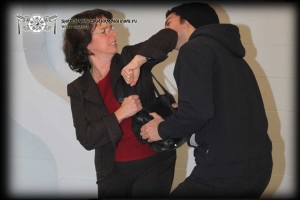Self-defense: do you have what it takes?

There is a lot of talk about self-defense these days, and rightly so.
When you consider the possibility that in an instant, someone can rob you of your possessions; take advantage of you physically, or worse…
Not knowing how to react in such a situation could leave you scarred for life, make waste of all the time and effort you have invested in acquiring knowledge, and developing competence in your chosen field, or worse, leave your loved ones in grief.
So how do you react to a physical threat?
What skill sets and knowledge do you need to be safe?
Here are a few tips and guidelines that can help you.
Alertness and awareness
The first step towards adequate self-defense is being alert and aware of your surroundings. Keeping a broad view of your environment and you attention flowing will allow you to sense and see danger before it comes too close. So no matter where you are, try to keep an eye out for potential threats, and constantly scan your surroundings.
Attitude
The second easy tip for avoiding a potentially hazardous situation is to adopt the right attitude. Studies have shown that criminals most often choose the “easy prey”, someone who will not put up too much of a fight. This attitude shows through by the way you carry yourself.
Typically, aggressors will be looking for a passive demeanor, indicating fear: hunched over, nervousness, no eye contact.
But on the other hand, when a confrontation is imminent, an aggressive behavior (fists up, leaning forward, shouting) can also lead to unnecessary injuries.
The correct attitude to adopt in this situation is a calm, confident assertiveness. While walking around you should be standing tall, have strong eye contact, and look like you know where you are going.
And if confronted with an attacker, until he is too close, you should stand your ground, palms in front, telling him to back off with strong eye contact and a strong, yet calm, confident voice.
Of course, it helps your confidence if you have the skills to back it up, but it is still better to fake it till you make it… until you develop your skills.
Distance
Next, you must be aware of distance. There are three ranges that are dangerous for you, assuming the attacker does not have a firearm or long weapon. The first range he will cross is kicking range, then punching range, and finally grappling range.
You should never let a potential attacker enter your kicking range without backing away, or attacking, since at this point you never know when a strike can come and knock you out.
Techniques
And lastly, if push comes to shove, you have to know how to react. Remember, in the case where the attacker will potentially be much stronger than you, your objective will not be to knock him out or submit him, which requires a lot of skill and practice. Rather, your objective is to surprise him with an attack, and slow him down in order to get out, or call for help.
But most importantly, in order for your techniques to be efficient, there are a few criteria that must be met.
The technique must be efficient.
Learning and practicing a technique that is too complicated or inefficient will not produce the desired results, and can be very dangerous for you.
You must be strong enough.
No matter the technique you choose, there is a certain minimum amount of strength and solidity that you must have to make it work. And to develop this strength and solidity you must condition your body with specific training.
You must learn it from a good teacher.
Trying to learn and be good at self-defense by self-educating, watching videos or learning from an inexperienced teacher is most often an exercise in futility. Try to find someone who knows what he is talking about, has a solid background and experience to show you and guide your practice.
And lastly, you must practice, practice, practice…
Once you have found a good teacher, and he has shown you efficient techniques and ways to become stronger, you must practice. Develop your motor skills, strength and solidity. Practice the technique on your own till it comes out perfectly every time. Practice the technique with a partner till your application, distance and timing is perfect. And practice the technique in as real a circumstance as possible, in order to be ready if the situation ever presents itself.
Remember that in a real self-defense situation your strength, motor skills and speed will be greatly diminished by your emotions. The only way to be sure you can defend yourself, is to do it over and over again, as often as possible, in the most realistic setting as possible.
We’ll be learning this and more in the weeks/months to come in kung fu class, all you need to do is be there, practice seriously, and if you can, practice a bit at home as well.
See you in class,
Have an excellent day, and practice well!
